Fast Break Basketball Offense - Carolina Secondary Break
The fast break fills multiple roles. It serves as a quick-strike fast break, a transition secondary fast break, an early offense, and as an entry to his famed "passing game." It allows for a seamless transition from one phase of offense into another. There is no stopping to set up plays or reposition players.
It is a "numbered fastbreak." Players don't fight for spots. They have assigned lanes to fill and this allows the fast break to continue even if one of the players is slowed while getting up the court. It also allows players to fill positions where they would in their offense and accentuates the strengths of each player. It contains many of the same principles as Smith's "passing game" such as an emphasis on ball reversal and multiple high-low opportunities. There might seem to be a lot of options, and there are. However, each additional option is simply a logical progression in going to the next pass if the current pass does not present the opportunity that you want.
This is the predominant fast break being run today in college basketball. North Carolina, Kansas, Notre Dame are just a few of the teams that run this break.
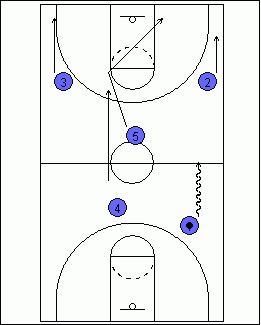
2 is a shooter and runs the right wing
3 is a shooter and runs the left wing.
4 & 5 are trailers. The first trailer fills the ball-side block by going to the opposite elbow and then angle cuts to the block.
The second trailer runs in line with the Weakside elbow.
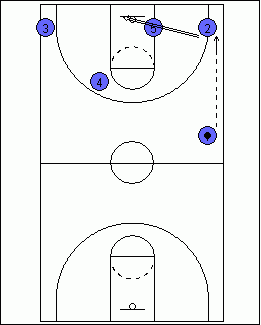
"Headmanning" is when the guard passes the ball ahead. It can be done once the player is in position or as they run up the court. If there is a good ballhandler ahead of the ball, the 1 man can pass it up as early as he can and the ball then is dribbled into position.


5 ducks in
4 can either look to score or pass high low to the 5 man
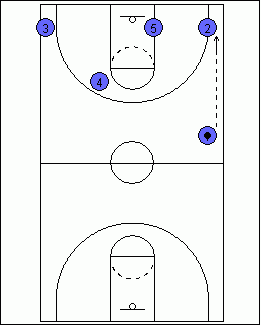
1 passes to 2 in the corner
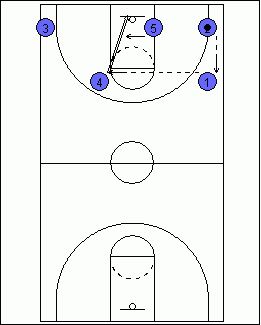
1 passes to 4 (high trailer).
4 can look to score
5 ducks in, 4 looks to pass high-low to 5

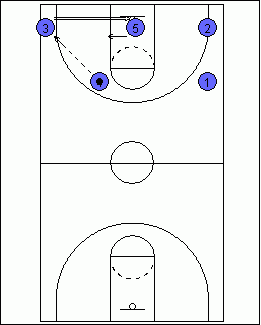
High trailer cannot score or pass inside so he reverses to 3.
After ducking in, 5 continues his cut to the block.
3 can look to score
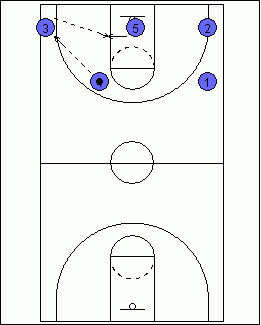

After reversing the ball to 3
2 steps to the middle and then up to backscreen for 4
4 cuts off the backscreen.
3 looks for the lob pass to 4

If 3 has no shot, pass to the post, or lob to 4 opportunity, he passes back out to 2
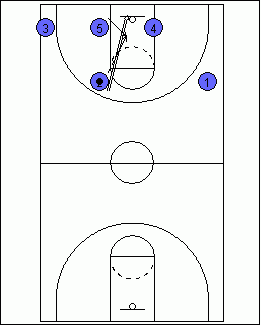
5 ducks in
2 can look to score or looks high-low to 5
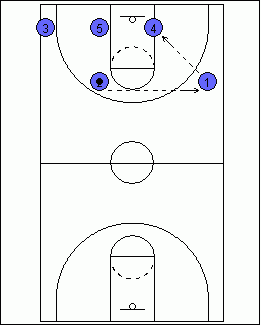
2 reverses the ball to 1.
1 looks low to 4
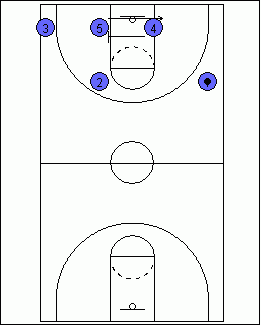
If there is no pass into the low post, 4 cross screens for 5.
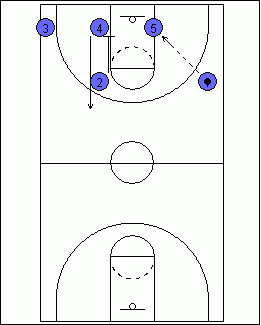
2 downscreens for 4
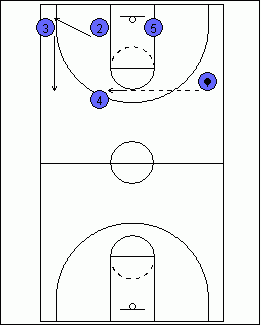
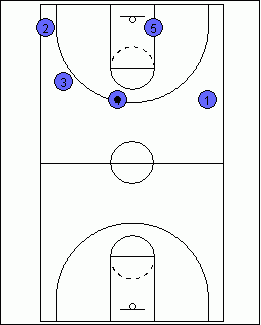
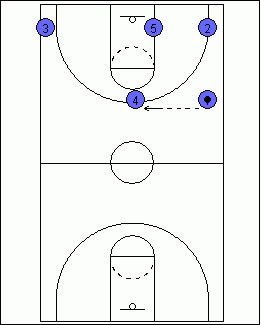
1 makes a direct pass to the high trailer (4).
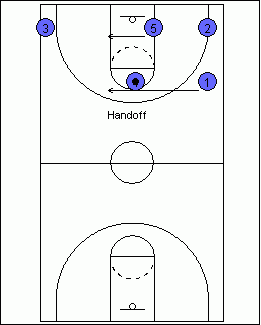
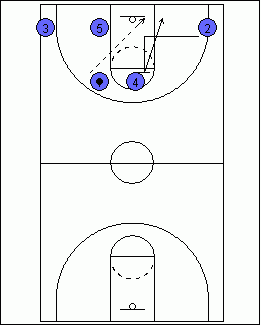
4 cuts off the backscreen.
1 looks to pass to 4 on backdoor or lob.
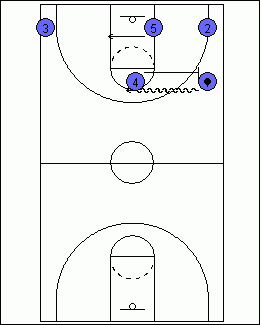
1 keeps his dribble alive
The high trailer (4) fills his spot and then ballscreens for 1.
1 dribbles off the ballscreen and 5 cuts to the opposite block
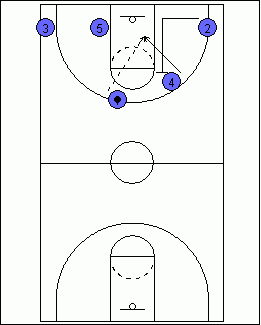
1 looks to 4 for backdoor or lob pass.
Related Pages & Helpful Resources
Transition Offense - Paul Westhead - Loyola Maramount
Attack Off of the Foul Shot - Foul Line Fast Break
How To Run The Basketball Fast Break Offense and Transition Offense - Philosophy, Offenses, Drills
Basketball Fast Break & Transition Drills - Full Court Drills
5 on 3 + 2 - Fast Break Drills
Want to learn how to build your fast break and transition offense step by step?
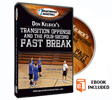
|
Don Kelbick's Transition Offense and the Four-Second Fast Break This DVD shows you how to build your fast break and transition offense step-by-step, so you can easily teach it during practice. It will also show you how to seamlessly transition into your half court offense to keep the defense scrambling. As every great defensive coach will tell you, they play their best defense when they have their 5 players back. This DVD will show you how to take advantage of the defense when they're not set and currently in transition. It also includes many fast break and transition drills that build mentality, aggressiveness, decision-making, and basketball skills. This DVD is 110 minutes long and neatly organized ... (more info) |
FREE BONUS PDF
10 Easy Transition Offense Drills
Do you have any questions or suggestions for this offensive play? Let us know by leaving your comments...
|
|||||||||||||||||||||||||||



 Facebook (145k Followers)
Facebook (145k Followers) YouTube (152k Subscribers)
YouTube (152k Subscribers) Twitter (33k Followers)
Twitter (33k Followers) Q&A Forum
Q&A Forum Podcasts
Podcasts